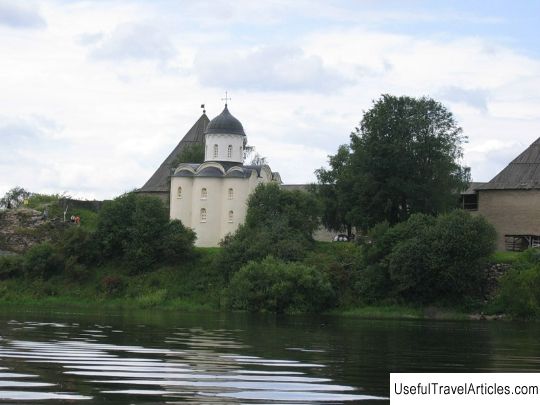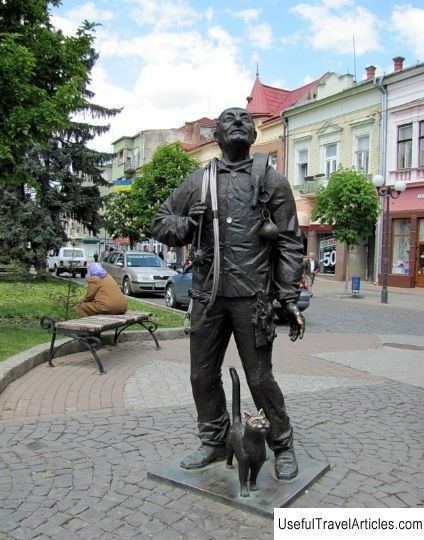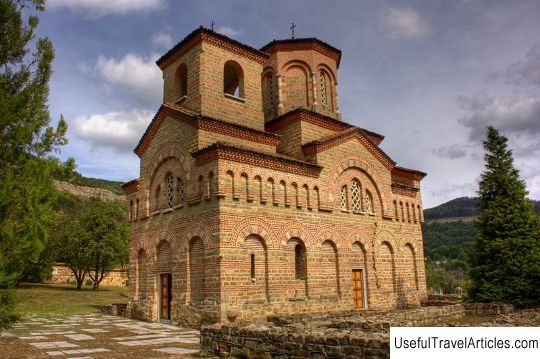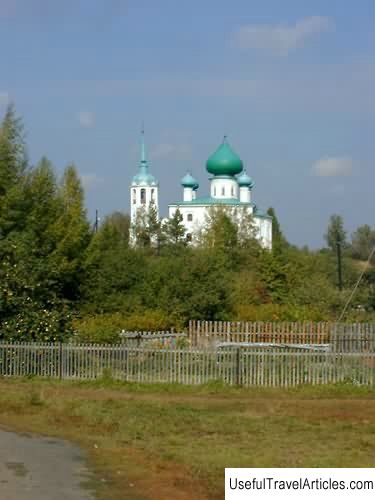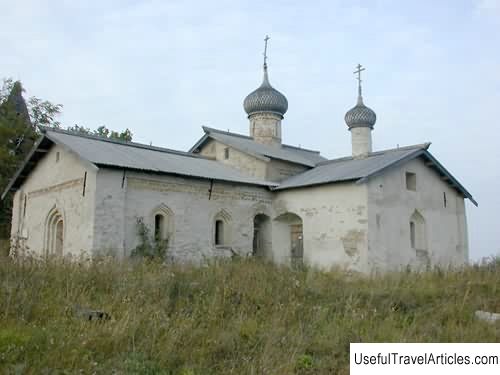Dmitry Solunsky Church description and photo - Russia - Leningrad region: Staraya Ladoga
Rating: 8,4/10 (687 votes) 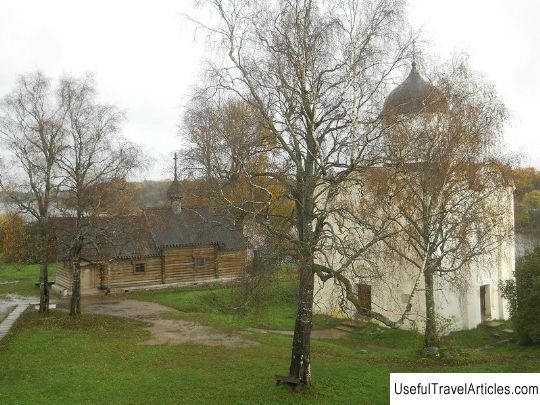
Dmitry Solunsky Church description and photos - Russia - Leningrad region: Old Ladoga. Detailed information about the attraction. Description, photos and a map showing the nearest significant objects. Photo and descriptionThe Church of Dmitry Solunsky is located in Staraya Ladoga - a famous place steeped in legends and legends. The first mention in the chronicles of Staraya Ladoga occurs in 862 much earlier than other Russian cities. It was here that the founder of the first dynasty of Russian tsars, Rurik, was called to reign. In 1114, the first stone fortress in Russia was laid here. In the St. George Cathedral built in 1164 in the fortress, Alexander Nevsky prayed for the victory of the Russian troops. The Church of Dmitry Thessaloniki belongs to the ancient type of wooden temples. It was built in the form of "cage" buildings, based on the same constructive and compositional techniques as in an ordinary peasant hut. The first churches in Russia were built in the 10th century. in Kiev by Byzantine masters. St. Sophia Cathedral in Novgorod was built of stone in the middle of the 11th century. But not all the architects from the people could meet, and then take the basis of the tradition of Byzantine temple architecture, captured in the stone temples of Novgorod and Kiev. For this reason, the first churches in Russia inherited the look of ordinary peasant dwellings and were cut in the form of "cages" - rectangular simple log cabins - "quadruples". The altar in wooden churches was also made rectangular, it was not chopped along the edges. Only the dome with the cross was evidence of the functional purpose of such a building. The Church of Dmitry Solunsky was built in the early 17th century, after the liberation of Ladoga from the Swedes. Saint Dmitry Thessaloniki, like George the Victorious, has long enjoyed special veneration among the Slavs. One of the first mentions of the church is found in 1646 in census books, but the temple was built earlier - about 1612-1613, at that time Ladoga was just being rebuilt after the devastation of the Time of Troubles. As a winter (warm) church at the St. George Church, the Church of Dmitry Solunsky was part of the St. George Monastery. The monastery was founded in 1146, in 1764 it was abolished by the decree of Catherine II. The first church was dismantled due to dilapidation, and at this place, at the request of the parishioners, a new one was built, which is an exact copy of the previous one. Old, but suitable for construction, logs were used for the construction of a new church, and the unusable ones were burned. In 1901 the church was again dismantled due to dilapidation, but six months later a stone foundation was brought under it and reassembled. The new church also copied the previous one in detail. Separate details from the old building took their place in the new temple. These are window grilles, separate parts of the porch, carved moorings, a lock, a door frame with a canvas. Thanks to the use of old details, the Dmitrievskaya church that has come down to us has preserved the forms of the temple originally created here. The temple consists of three cells: the church itself, the altar and the refectory. On the western side of the church there is a canopy, over the porch of which there is a canopy that resembles a barrel, which rests on two carved columns. The church, the refectory and the vestibule have a gable high roof; the altar is covered with a five-slope roof, which repeats the shape of its frame. The church roof is raised above the entire roof, it is crowned with a dome, consisting of a neck and a poppy, ending in a cross. The roof of the church is made of "red" planks, which have decorative cutouts at the ends. In the old days, a layer of birch bark was laid under it, and under it there was an additional layer of tesa. The saw was not used in the Russian North until the middle of the 18th century, and in some places even until the beginning of the 20th century, so making a timber was a very laborious process: the log was laid on the ground and split with wedges, then it was hewn to the required thickness. The head of the Dmitrievskaya church is covered with an aspen ploughshare in "scales". There is not a single detail in the architectural decoration of the temple, which is only a decorative decoration. Now there is a small local history museum inside the church. Opening the iron-clad door, you find yourself in the vestibule, from where, through the refectory, you enter the church. The altar part is separated by a main wall with an opening from the main frame. There is an assumption that the Royal Gates have survived from the first church of Dmitry Thessaloniki, or were transferred here from some ancient temple, since they date back to the beginning of the 16th century.           We also recommend reading Tokyo Towers description and photos - Japan: Tokyo Topic: Dmitry Solunsky Church description and photo - Russia - Leningrad region: Staraya Ladoga. |
